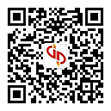Read the following passage carefully and complete the succeeding three items,II,III,IV.
(1)Nazca (纳斯卡)is one of South America's most perplexing archaeological riddlesand one of the world's most beautiful works of art. Etched upon Peru'svast,barren Nazca Plains are hundreds of long,ruler-straight lines, immensegeometric symbols and giant drawings of curious birds and animals, the work ofpre-Inca Peruvians 1,500 years ago.
(2) Nazca was first revealed to modern eyes in 1926 when three explorerslooked down on the desert from a hillside at dusk and briefly saw a Nazca linehighlighted by the low slanting rays of the sun. But it was not until thePeruvian air force took aerial photographs in the 1940s that the fullmagnificence of the panorama was apparent.It was as if a dozen desertedairports were spread out across the plains.Hundreds of what looked like“landing strips”for aircraft were revealed.There were eighteen condor(秃鹰)-like bird drawings,up to 400 feet long;four-sided figures with two linesparallel;and long needle-like triangles which ran for miles.Often the longlines met,like star-clusters.Among the many abstract patterns were a giantspider,a monkey,a shark,reptiles and flowers,all drawn on the ground on a huge scale.
(3) The scale is monumental,but from the ground almost invisible and totally incomprehensible. The amazing fact about Nazca,created more than 1,500 yearsago,is that it can only be appreciated if seen from the air.Many,therefore,regarded it as a prehistoric landing ground for visitors from outerspace,but Jim Woodman,an American explorer,who was long fascinated by themystery of Nazca,was convinced that the ingenious ancient people of thearea had learned to fly.He believed that Nazca only made sense if the peoplewho had designed and made these vast drawings on the ground could actually seethem,and that led him to the theory that the ancient Peruvians had somehowlearned to fly,as only from above could they really see the extent of theirhandiwork.With this theory in mind,he researched into ancient Peruvian legendsabout flight and came to the conclusion that the only feasible answer was ahot-air balloon.To make such a balloon in the way the ancients must havedone,Woodman learned that he would require four things: textiles,to make thebag to trap and hold the hot air;a power source like fire to heat the air;calmweather to allow the inflation of the balloon;and the intelligence to devisesuch a craft.
(4)Peruvian mythology was full of ideas about flying.Ample evidence of thiswas found in the designs on Nazca pottery and tapestries and the art ofballooning survives today among primitive South American peoples.One of thetheories about the balloons was that it was the way in which some Incasreturned their dead to the gods—by hot-air balloons that soared out of sighttowards
the sun before prevailing winds a mile or more up wafted them out overthe Pacific Ocean to sink unseen into the water as the air cooled at sunset.
(5)Woodman built a balloon-type airship of the same fabrics and fibers thatwould have been available to the men of Nazca at the time. It was highadventure and culminated in the spectacular flight of a balloon which Woodmancalled“Condor I”. There was no doubt about it,only from the air could the fullglory of Nazca be appreciated.“Flying between 300 and 1,000 feet,the sheersize,scope and beauty of Nazca is electrifying.Soaring above it all,I knewthat ancient eyes had seen the immense creation below.Ancient man could neverhave built and devised all this and never seen it,”said Woodman.“Ifwe,as‘modern men',could fashion a flying craft by using only cotton,hemp andfire,surely those who were there in Peru centuries before could have done thesame.Everything necessary to fly was there.”Jim Woodman's flight was a moderndemonstration of an ancient possibility.
(6)His practical demonstration may have been spectacular,but Woodman hadfailed to impress the historic and scientific community.While not asoutlandish as Erich von Däniken's extraterrestrial orientated Nazca theories,Woodman's hot air balloon concept is largely discredited. A large number ofholes in Woodman's theory have been pointed out,many of which center upon hisinconsistent and inexact supporting evidence.However,what Woodmanaccomplished with the Nazca hot air balloon was not without lasting merit.The successful though short-lived flight of Condor I raised some interestingquestions about aviation history and the history of technological developmentas a whole.
[单选题]
A.Situated
B.Spread
C.Covered
D.Carved
[单选题]
Intheir ______.
A.outlining all the details of Nazca
B.showing the whole view of Nazca
C.revealing a dozen deserted airports
D.solving the mystery of the handicraft
[单选题]
A.hillsides and mountains
B.landing strips for aircraft
C.birds,animals and flowers
D.parallel lines and triangles
[单选题]
A.genuine
B.generous
C.creative
D.industrious
[单选题]
A.worshipped balloon-gods
B.were not capable of flying
C.were the first to make balloons
D.could fly by means of balloons
[单选题]
A.If the designers could catch sight of it from the sky.
B.If the creators'desire to complete it could be evoked.
C.After the local people had mastered the flying theories.
D.After the craftsmen had acquired the skill of vast drawing.
[单选题]
A.cool down at sunset
B.fly higher over the Plains
C.drift towards the Pacific Ocean
D.soar out of sight towards the sun
[单选题]
A.legacy
B.value
C.solution
D.effect
[单选题]
A.reveal ancient South Americans'religious beliefs
B.showcase ancient people's unparalleled creative power
C.guide the reader to explore the picturesque landscape in Peru
D.introduce the complicated process of making hot-air balloons
[单选题]
A.its miraculous design is beyond the reach of archaeologists
B.its abstract images bear incomprehensible symbolic meanings
C.its underlying religious beliefs are mysterious to modern people
D.its exquisite craftsmanship seems to be a secret to archaeologists

 原创试题专区
原创试题专区 开通学校服务
开通学校服务





